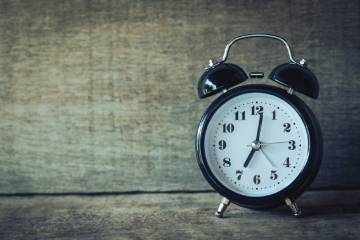Weather
By Dan Skeldon
Presuming you “sprung ahead” your clocks one hour the weekend of March 11-12, then you’re back on daylight saving time for the next eight months. Sure, you lost the hour of presumably precious sleep. But you’re also most likely already enjoying the extended evening daylight. The sun now sets in South Jersey after 7p.m., as it will every evening until September 19.
But why do we partake in this bi-annual ritual of setting our clocks forward in the spring and then back again in the fall? And is there a chance that the practice goes away altogether? Let’s break down the history and future, the pros and cons, and the facts and figures of this increasingly unpopular practice.
First off, forget the “s”:
The most common mistake is calling it daylight savings time. Be sure to leave the “s” off of “saving” to be grammatically correct. And it’s not capitalized either. Although Eastern Standard Time (or any time zone) is.
So why do we have it to
begin with?:
Some rumors say it was created to help farmers. Others say it was enacted to help save energy. The latter has more support, theorizing that the extra daylight during summer evenings would keep people outside and not inside using electricity. Of course, there’s no statistics to prove people are actually outside and energy is being saved.
Don’t like the time change…
head here:
Daylight saving time is not mandated by federal law although widely practiced through most (but not all) of the United States. Hawaii and most of Arizona don’t practice it, as well as Puerto Rico, the Virgin Islands, and some US territories in the Pacific Ocean. Of course, most of these are southern locales with a warm climate, not much change in daylight due to their proximity to the equator, and therefore not in much need of extra evening daylight in the summer.
They’ve actually extended
daylight saving time…twice:
When the Uniform Time Act was established in 1966, any state that practiced Daylight Saving Time was required to have it last for (the same) six months, hence the uniformity. 20 years later in 1986, it was extended to last for seven months. And yet again in 2005, another month was added. So daylight saving time now starts the second weekend in March, and lasts through the first weekend of November. You can actually thank the candy industry, at least in part, for the most recent extension. They actually lobbied Congress for the extra month so Halloween would be included in daylight saving time, reasoning the extra evening daylight in late October would increase candy sales. Sure enough, candy sales have steadily risen since. But does the delayed time change deserve credit?
You don’t quite lose an hour of sleep when we spring ahead…but it’s close:
Studies have shown it does take our bodies at least a few days to adjust to the time change. The cliche says that we lose an hour of sleep in the spring and gain an hour in the fall. Well several studies have been done and showed our body’s circadian rhythm is indeed thrown off by the time change, but we don’t quite lose or gain a full hour. It’s actually about 40 minutes. But that’s 40 precious minutes, right?
There’s a growing movement to make Daylight Saving Time year round:
If we’re on daylight saving time(DST) for eight months and standard time for only four, why not get rid of standard time altogether? There’s actually increasing interest to do so, but action from the federal government would be required. We got somewhat close in 2022 with the passage by the US Senate of the Sunshine Protection Act of 2021, which would make daylight saving time permanent. However, the US House failed to take up the legislation, that Congress ended, and we’d have to start from scratch once again in any future Congress that decides to take up the matter, and also get a presidential signature.
Is year-round daylight saving
time beneficial?
First and foremost, it would do away with having to adjust to the time change twice a year. And in a close second, it would also do away with the depressingly early sunsets in late fall and early winter. Instead of a sunset just after 4:30pm in late November and most of December, the earliest sunset would be an hour later, around 5:30pm. Supporters of the idea suggest it would help alleviate Seasonal Affective Disorder and not have those that work or have after school activities coming home in the dark. Of course, there’s a flip side. And that would be late sunrises, to the tune of 8am or later sunrises for a two-month stretch from early December to early February.
But is year-round standard
time just as good?
Most would probably say no. Sure, being on Eastern Standard Time year-round also does forego the disruptive time change each spring and fall. And supporters of this idea say that standard time is more in sync with our body’s natural circadian rhythm. But it also does away with the late 8:30 pm summer sunsets that so many locals and vacationers cherish each summer season. And that probably kills support for the idea right there, at least here at the shore.






